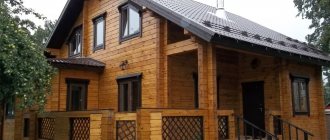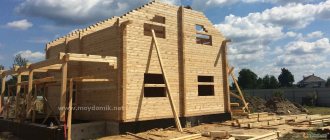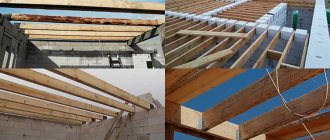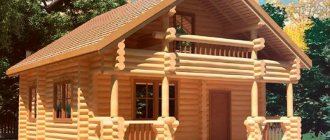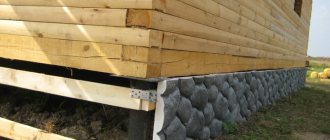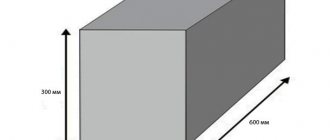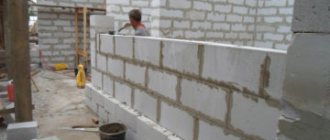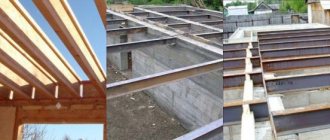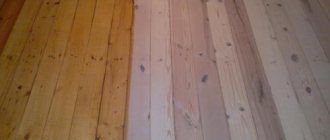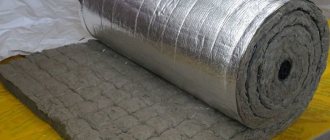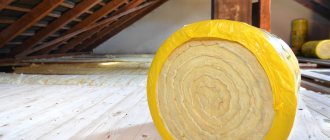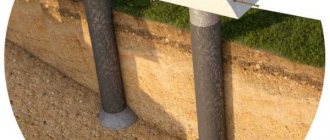New generation material – laminated veneer lumber
Most people, especially the population of megacities, dream of environmentally friendly housing and better living conditions. Today, traditions going back centuries, coupled with the latest technological processes, make it possible to build wooden houses of excellent quality. Glued laminated timber is the most in demand and popular in the construction of houses, as it is natural, durable and aesthetically pleasing. Such buildings practically do not shrink, have a long service life and are ready for use and finishing immediately after completion of installation work.
Reviews
- Andrey, 25 years old: “I spent a very long time analyzing and comparing the positive and negative aspects of laminated veneer lumber before I built a house from it. But as a result of my reflections, I realized that the number of positive characteristics is greater. Firstly, such material does not shrink or crack, which is very important. You don’t really want to notice in a few years how the appearance of your home has been spoiled. Secondly, laminated timber is not susceptible to deformation. Of the minuses, I would only note the high cost of this material, although it is fully justified by its qualities.”
- Oleg, 38 years old: “I’ll start right away about the shortcomings of the material, since there are few of them. The main disadvantage is the cost. Therefore, not everyone can build a house from laminated timber. As for the advantages, they are obvious: low thermal conductivity, beautiful appearance, ease of assembly, environmental friendliness, no shrinkage.”
- Leonid, 56 years old : “I have been working in the construction industry for a long time and I can say that the best material cannot be found. Of course, not everyone can afford it due to its high cost, but the positive qualities it possesses cannot be counted. I built such a house for myself and have been living in it for 5 years. During this time, no negative changes occurred. What was especially pleasing during the construction period was that there was no external finishing, and therefore there was no need to use expensive finishing materials.”
Here you can read about vibration panels for exterior home decoration.
Glued laminated timber is a unique material that is popular in the construction of houses. Of course, it has its drawbacks, but this does not diminish its demand. Having built a house always means a feeling of comfort and reconnection with nature.
Production Features
The building material we are considering is made this way: logs are radially sawn into boards, which are subsequently well dried (taking into account the type of wood), to approximately 10-12% humidity, and mechanically processed, as a result of which all possible defects are removed. After high-quality drying, the wood undergoes a visual inspection to detect and eliminate areas with dead knots, resin pockets and fungal infections.
Then the boards (otherwise called lamellas) are glued together with special compounds and according to a technology specific to such a material. There can be several of them in the finished timber; the length of the blanks can reach up to 18 meters. Next, the wooden beams are dried, and only after that the laminated veneer lumber is calibrated, that is, it acquires its usual rectangular shape.
Glued laminated timber is a material that meets all environmental requirements
The environmental friendliness of timber, that is, its harmlessness to the environment in general and humans in particular, depends on two parameters:
- quality of compounds used for gluing lamellas;
- the quality of impregnations used to protect wood from external influences.
No one will doubt the environmental friendliness of wood, but one should be selective in the selection of means for processing it, so as not to negate the main trump card of the material - its naturalness. Wood adhesives that meet all environmentally friendly parameters appeared in Europe only in 2007. Until this time, formulations based on formaldehyde were used, which are characterized by high toxicity levels.
In Russia, high-frequency gluing is still used using MUF adhesives saturated with formaldehyde. Although the gluing technology does not require mandatory certification, the “environmentally friendly” trump card can only be used when producing timber based on certified adhesive compositions, with the absence/minimum level of formaldehyde fumes.
EPI adhesives are considered the most “harmless” , but according to SNIP II-25-80 and its updated version SP 64.13330.2011, such compositions are allowed only for structures of the 3rd class of responsibility, and in Europe they are not used at all for the manufacture of wall beams.
The list of adhesive materials that have been certified according to European standards can be found on the official website of the German Otto-Graf-Institut (FMPA) - the list is updated annually.
But it should be noted that according to current Russian standards, the use of polyurethane adhesives (PUR KM), popular in Europe, is not allowed to be used in the production of wooden structures.
However, a number of melamine adhesives have also been certified in Europe, which have passed the strength test and are classified as vapor- and gas-permeable compounds. The adhesive mass hardened under the press is considered safe in terms of environmental friendliness. But how correct its application was and how complete the polymerization process was remains on the conscience of the manufacturer.
Advantages of laminated veneer lumber
Like any building material, laminated veneer lumber has advantages and disadvantages. First, let's look at its advantages:
1. Houses made of laminated veneer lumber are easy to install and assemble, and shrinkage and shrinkage are kept to a minimum.
2. The material practically does not deform and does not change its shape.
3. During operation, it does not become cracked. Its surface is flat and smooth, requiring no additional processing or labor-intensive and expensive finishing work.
4. Glued laminated timber has optimal humidity, which prevents rotting and the appearance of fungal microorganisms and harmful bacteria in it.
5. This material can be used to implement very complex projects.
Features of choice
When choosing laminated veneer lumber for a home, based on reviews from owners, the main attention should be paid to the following aspects:
- The quality of gluing boards and drying the material.
- The absence of bark (wane), uneven cuts and cuts on the lamellas.
- Correct geometry - each plane of the profiled timber must be polished and even, otherwise you may end up with a crooked building.
- Type of construction - the purpose of support and wall products is different.
Please note that the thinner the lamellas are used for gluing, the higher the strength characteristics of the material will be and the more durable the housing will be. This lumber is not afraid of water. Moisture is harmful to wood, but the adhesive layer between the boards of the timber will not collapse. If the material suddenly delaminates, it means that you bought defective material, which was glued together with glue whose shelf life has long expired.
When producing lumber for housing in Russia from laminated veneer lumber, adhesive compositions based on polyurethane or melamine are used. The fact is that such adhesives do not contain phenol, and if there is formaldehyde, it is in minimal quantities. Therefore, you can safely use these types of glue and not worry about the health of your family. The source of phenolic and formaldehyde fumes should be looked for in completely different places. Houses made of timber often use a huge amount of finishing materials. Most likely, they are the ones who will emit harmful substances. Non-woven wallpaper, linoleum, paint and varnish - look for the cause of the pungent odor and deteriorating health in them.
But this only applies to high-quality materials. Before you make a purchase of laminated veneer lumber, you should ask your consultant for certificates that indicate absolutely all the characteristics of the product. You should buy this type of building material only from manufacturers who use high-quality adhesives. This will be your guarantee that there is no phenol in the lumber, and also that the material is not defective.
Minuses
However, it cannot be said that laminated veneer lumber is distinguished by positive characteristics alone. There are also disadvantages, here are some of them:
1. High price for glued material. Such a house will cost 2 times more than buildings made from non-profiled logs.
2. Due to the fact that the manufacturing technology is quite new, data on the behavior of this material over long periods of time (for example, after 30-50 years) are not yet available, since its properties have not yet been studied.
3. Use of glue in the production process. Despite the fact that the adhesive compositions comply with the standards, in terms of environmental friendliness, laminated veneer lumber will be inferior to ordinary profiled timber or logs, since they completely lack such substances. The use of glue worsens some characteristics; in any case, air exchange and moisture circulation do not occur fully. In addition, the indoor microclimate is also disrupted.
Comparison of glued and profiled timber
Some experts are still arguing which timber is better - glued or profiled.
Characteristics of dry profiled timber.
The first thing you should pay attention to when comparing is deformation. Untreated wood is a fairly flexible material. It begins to crack and the fibers separate. If such a nuisance happens to the house, it will quickly lose all its thermal insulation properties.
If you notice such a moment in time, you can often get by with basic repairs, but if this issue is left unattended, this can lead to a complete disruption of the functionality of the house.
Therefore, during construction, it is recommended not to neglect preventive finishing, and even better - to use high-quality insulation. Of course, first of all you need to find out the quality of the profiled timber. If we talk about laminated veneer lumber, the production technology eliminates cracking and delamination of materials.
Often, profiled boards are taken for construction without undergoing pre-treatment with drying chambers. While the tree will get rid of its natural moisture, the building itself will settle, and this, in turn, can lead to distortion of the surfaces. Some companies provide separate services for drying profiled timber. But their cost is such that it is better to immediately purchase glued ones - it initially goes through drying chambers.
Thus, laminated veneer lumber is much more profitable and better than its profiled counterpart. But this does not mean that the latter material is not worth using at all. Everyone has their own preferences and capabilities.
What is the reason for the high price of building materials?
Despite the fact that the desire to live in a house made of natural materials is very great, many are deterred by their cost. Indeed, laminated veneer lumber, the disadvantages of which were discussed a little higher, is more expensive than all conventional analogues made of wood - rounded logs, ordinary timber, etc.
The high cost of such material is undoubtedly influenced by the rather complex process of its production. Production costs, cycles, consumption of wood and resources increase, which cannot but affect the cost.
High-quality laminated veneer lumber, of course, has shortcomings, and all of them lie where there is unfair production, irresponsibility, inattention, negligence when choosing equipment and raw materials, etc. Some people use not very high-quality materials in their work, thereby trying to save money and simplify the manufacturing process. However, the homeowner will soon regret this, as his house will literally begin to fall apart and collapse. On the other hand, real laminated veneer lumber is practically not subject to deformation; it is more durable compared to other lumber. It turns out that the inflated price is completely justified. But the low cost, on the contrary, should alert you.
Glued laminated timber is vapor permeable and “breathes” no worse than a solid wood wall
With all the advantages of laminated veneer lumber, a product made from it will never be comparable in vapor permeability to similar products made from solid wood. A lot of adhesive partitions reduces the ability of wood to “breathe” several times (by how much exactly depends on the number and width of the lamellas). The highest vapor permeability indicators have horizontally glued products, which we practically do not produce. However, not a single type of laminated veneer lumber can compare with solid wood in this parameter.
Is laminated veneer lumber safe?
There are often disagreements about the safety of materials such as laminated veneer lumber for humans and the environment. The reason for this controversy is the use of glue in the manufacturing process.
Here you need to take into account that the substances used in the manufacture of such timber consist of natural-based materials. In some ways, glue can be compared to wood resin, which is more durable and resistant to various influences. But since laminated veneer lumber, the advantages and disadvantages of which we have already examined, consists of several boards glued together, there is no need to talk about good movement of moisture and air. Accordingly, we can draw the following conclusion: it is not as useful as solid wood, but it cannot be called harmful either, since all materials used for its production are necessarily certified.
According to statistics, many ordinary homeowners and construction companies choose laminated veneer lumber. Disadvantages (reviews about the use of this material confirm this), of course, affect some properties of wood, but this is not critical.
Pros and cons of building houses from laminated veneer lumber
Pros and cons of building houses from laminated veneer lumber
It is important to approach the choice of material for building your home responsibly.
Today there are a lot of options on the market, each of which has both advantages and certain disadvantages. Today we will look at all the pros and cons of such a material as laminated veneer lumber. A representative of the VDK NN company, Valery Ivanov, told us about all its features. Houses made of laminated veneer lumber
Construction of country houses
Production of laminated veneer lumber
Assembly of laminated veneer lumber
Materials for house cladding
The history of laminated timber goes back about half a century, and it has been represented on the Russian market for more than 15 years. Every year this material is becoming increasingly popular, due to a number of reasons.
Related article: Why should you buy a country house in winter?
Perhaps one of the most important advantages of laminated timber is the ability to install it in a matter of days and move into the house almost immediately. Only a few are willing to wait six months for the log house to “settle” and settle in order to continue construction.
Here someone will object that, like wood, laminated veneer lumber also shrinks. This is true. However, with solid wood materials, natural shrinkage is so pronounced that it does not allow you to move into the house for at least 6 months. Whereas laminated veneer lumber can be laid on an area of 200 square meters in just 4-5 days, after which you can immediately move into a new home. In the case of laminated veneer lumber, adjustments are made once, approximately 2 months after completion of construction.
Related article: Seven main trends in a country house.
Another feature of laminated veneer lumber is the appearance of minor cracks. Since this material is wood, its behavior cannot be completely changed. Despite the fact that barely noticeable cracks and cracks do not affect the thermal insulation of the house, some may find them unaesthetic. In this case, it is worth choosing artificial materials for building a house. However, then you will sacrifice environmental friendliness and a healthy microclimate of your home.
Are there materials in which cracks and cracks do not appear over time? Undoubtedly. This is plaster and plastic siding. However, these materials are not environmentally friendly. If you still want to give preference to a natural, environmentally friendly material and at the same time minimize the negative effects of wooden housing construction, then laminated veneer lumber will be the best choice.
Related video: Wooden floors in a residential building
“The Finns are generally absolutely tolerant of this. For them, cracks in wood are an absolutely natural process. After all, this is a living material that reacts in its own way to temperature changes and exposure to the sun. This is the so-called tree breathing. By the way, such microcracks do not affect thermal conductivity in any way and do not extend beyond the depth of the lamella. And this is extremely rare,” said Valery Ivanov.
It is worth noting that buildings made of laminated veneer lumber have high thermal conductivity. Therefore, the use of such building materials reduces the cost of heating housing in winter. In such houses, only the roof and floor are insulated. In addition, laminated veneer lumber has high strength, is not prone to deformation and can easily withstand temperature changes. It is also moisture resistant.
Perhaps it’s worth talking about the process of manufacturing laminated veneer lumber.
To begin with, the logs are sawn into separate boards - lamellas - 50 mm thick and 100-200 mm wide. They are planed to a smooth state on all four sides, after which, using a powerful hydraulic press, the boards are glued together in a certain way and sent for drying. Next, a profile is applied to the beam - these are the grooves that allow the lamellas to be connected to each other like a constructor.
Related article: Wood cracking - how to fight evil
This building material has very precise geometric shapes. Therefore, during the construction process there is no need to optimize its shape. All this significantly speeds up the procedure for constructing a wooden house.
When gluing timber, natural glue is used. Its use does not in any way reduce the environmental friendliness of the material. The timber does not contain substances harmful to health. It is absolutely harmless to humans. Moreover, such wood is not only safe, but also acts as an antiseptic.
The best time to lay laminated veneer lumber is in winter, when it is frosty and dry outside. But after completing the work with the onset of heat, it is necessary to coat the timber with paint. This will protect it from ultraviolet radiation and external influences and significantly extend its durability.
Speaking of durability...
Numerous laboratory studies have shown that the longevity of laminated veneer lumber with a pessimistic forecast is 100 years, and with an optimistic one – 400. “History shows that during earthquakes and other natural disasters, everything was demolished, but the tree remained standing. That is why in seismically unstable areas there is a particularly high demand for wood,” said Valery Ivanov.
Fire hazard
It's time to dispel the myth about the high fire hazard of wood. The tests carried out suggest that this is nothing more than an established stereotype that has no relation to reality.
During the experiments, it was not possible to set fire to a wall made of laminated veneer lumber even with the use of gasoline. This is due to the lack of oxygen in the dense wall, as well as the complete absence of oxygen in the tree itself. After drying, the wood becomes similar in quality to brick. It is also popular for large spans, as it better retains its strength characteristics at high temperatures. By the way, the ceilings of the Moscow Manege were built from wood.
About the cons
Like any other material, laminated veneer lumber also has its drawbacks. And in this case, this is precisely the price, sometimes exceeding 20 thousand rubles per cubic meter. Glued laminated timber belongs to the category of elite materials. However, now there are many ways to optimize everything in the best possible way and offer customers really good prices.
When using laminated veneer lumber, there is also no question of finishing - after completing the assembly of the material, all that remains is to paint it. All this leads to the ever-increasing popularity of this material.
Varieties
There are different types of this material. Depending on the design and purpose, they can be divided into 2 groups:
1. Building materials for the construction of walls (for this, insulated or ordinary laminated veneer lumber is used).
2. Materials for the construction of individual structures (bent laminated veneer lumber and window beams, floor beams, etc.). The most popular are the Finnish and German types. Scandinavian laminated veneer lumber, the only disadvantage of which is that it requires the use of additional compaction (and in general it is a common type of profile), differs from the rest in the presence of two side tenons and special grooves. Such products are connected with a strong lock, and in the middle there is a place for laying the seal. The German profile is recognized by its comb-shaped connection. It provides maximum density without the use of sealing material.
Production specifics
To make laminated veneer lumber, choose one of four tree species - spruce, pine, cedar, larch. The last two are more expensive and are used less frequently. The tree trunk is dried in ovens to a moisture level of 12%, after which the blanks are sorted by length and thickness.
Next comes cutting the logs to width. The quality of the wood, the presence of knots, cracks, and damage in it are assessed. After they are removed, the boards are sorted again, only this time into external and internal.
The blanks are spliced into lamellas using tongues and grooves, then connected in pressing machines under pressure. Depending on the type of glue, the process takes from 30 minutes to 6 hours.
The number of lamellas in one beam is from 2 to 5; it depends on the expected thickness. In order to increase the strength of the material, the boards are laid so that the rings of wood are directed in different directions. The finished laminated veneer lumber is dried again and profiled on machines.
The use of glue allows minimizing shrinkage of the material (which is only 1% over 2 years). These are compositions based on melamine, isoacetate, polyurethane, the environmental friendliness of which continues to be debated. Yes, they contain a small percentage of harmful substances, but trusted manufacturers monitor the permissible concentration.
The technology for producing laminated veneer lumber is complex. But the aesthetics of the material allows you to do without finishing the facade and premises of the house, and also save on wages for builders.
